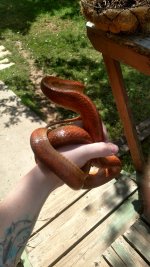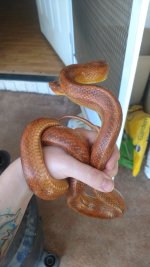Hello everyone!
I know there are probably a lot of threads like this out there but I can't seem to find the answers I'm looking for. So in the future I would love to breed my male bloodred (Captain Tuddles is his name. Letting my mom name him was the only way I could get him in the house), but I'm not exactly sure what morphs to breed him with to get other morphs (still new to the "if you put this with this you get this now or down the road" thing)
So I guess my main question is what morph can I breed him with to either get a different morph or pass down the gene for a different morph.
Please let me know if you need me to clarify or if you have any questions!
Thank you!
I know there are probably a lot of threads like this out there but I can't seem to find the answers I'm looking for. So in the future I would love to breed my male bloodred (Captain Tuddles is his name. Letting my mom name him was the only way I could get him in the house), but I'm not exactly sure what morphs to breed him with to get other morphs (still new to the "if you put this with this you get this now or down the road" thing)
So I guess my main question is what morph can I breed him with to either get a different morph or pass down the gene for a different morph.
Please let me know if you need me to clarify or if you have any questions!
Thank you!


